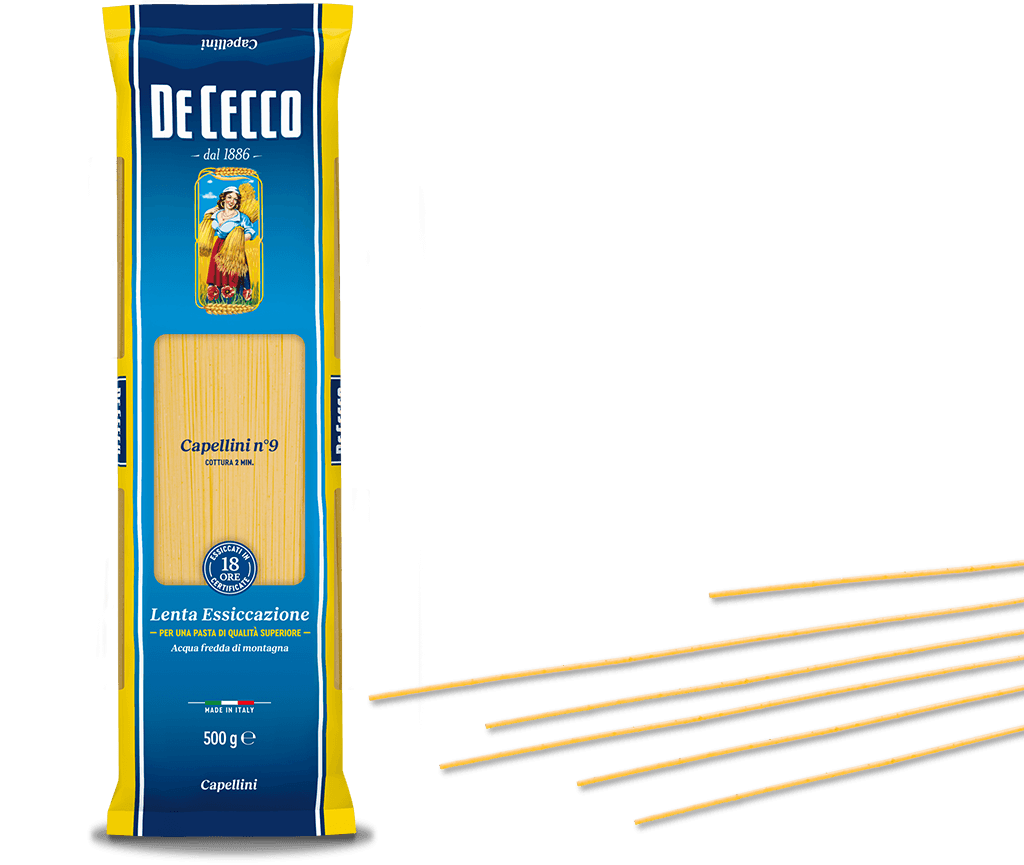Lasagna n° 502
- Cooking time: 27 min
Our method
Attention, care, experience, quality at every stage: from our mill to your table.
Capellini n° 9
The origins of Capellini, with their evocative name (fine hair) and light consistency, are contested between the area around Genoa, Naples and the Ciociaria (central Italy). It is one of the thinnest types of long pasta wound into a nest shape.
Even the name Capellini is reminiscent of the fine consistency of this type of pasta which is ideal for infants from 9 months old onwards to help them get used to eating food for grown-ups.
Simple condiments are recommended for this type of pasta. It is excellent combined with butter dressings, such as uncooked butter and cheese, or melted butter with sage and cheese. Egg or fresh raw tomato based sauces are also excellent. Another way to enjoy Capellini is in a light, chicken broth. In addition to broths and pasta dishes with sauces, this pasta is also used to prepare oven-baked dishes in the Naples region.
Available in 500g packs.






